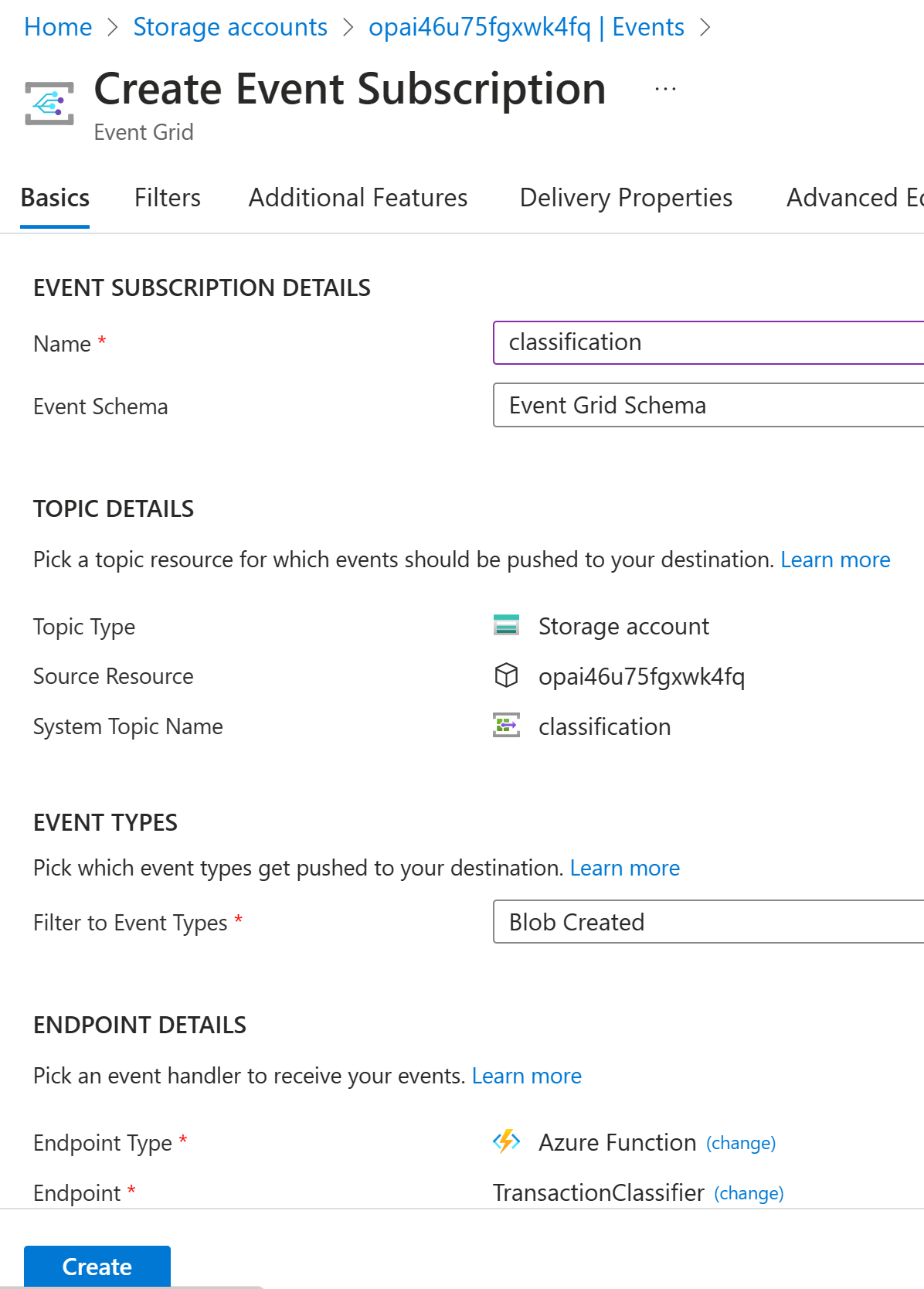Module 1: Lab - Transaction Classification Application
In this lab, you will create a transaction classification application that uses the Azure OpenAI API and other Azure services to classify a public dataset of transactions into a number of categories that we have predefined. These approaches should be replicable to any multiclass classificaiton use case where we are trying to fit transactional data into predefined categories, and by the end of running through this you should have an approach for dealing with unlabelled datasets.
Installation
This module requires creation of following Azure resources
- An Azure Storage Account and two containers: 1. “classification” - for the transaction file 2. “output” - for the results
- An Azure Function App Resource
- An Event Grid Subscription to the Azure Function App Resource from the Azure Storage Account for “Blob Created” events
- The first two listed resources are created by running the Github Actions workflow file module1-infra-worflow.yaml which executes module2-infra.bicep Bicep template. To trigger this workflow manually:
- click on the
Actionstab. - Select
.github/workflows/module2-infra-worflow.yaml. - Click on the
Run workflowbutton
- click on the
- Deploy the Azure Function App code using Github Actions workflow file module2-code-workflow.yaml as follows:
- In Azure portal, navigate to the Function App that was deployed in the last step.
- Click Get publish profile and download .PublishSettings file.
- Open the .PublishSettings file and copy the XML content.
- Paste the XML content to your GitHub Repository > Settings > Secrets > Add a new secret > AZURE_FUNCTIONAPP_PUBLISH_PROFILE
- Trigger this workflow manually:
- click on the
Actionstab. - Select
.github/workflows/module2-code-worflow.yaml. - Click on the
Run workflowbutton
- click on the
- Configure following Application Settings for the Azure Function by going to your
function app > Configuration > Application Settings:- OPENAI_API_BASE - Azure OpenAI API Endpoint URL (e.g. https://openai-demo-ahmedbham.openai.azure.com/)
- OPENAI_API_KEY - Azure OpenAI API Key
- OPENAI_API_MODEL - “text-davinci-003” (set it equal to the
model nameyou provided when deploying thetext-davinci-003model in Azure OpenAI Studio)
- Create an
Event Grid Subscriptionto the Azure Function App Resource from the Azure Storage Account for “Blob Created” events in Azure portal:- Navigate to your
storage account > Events > + Event Subscription - Set
Event SchematoEvent Grid Schema` - Set
System Topic Nametoclassification - Select only
Blob Createdevent type - Select
Function Appas theEndpoint Type - Set
Endpointvalue by selecting the correctSubscription,Resource Group,Function App,Slot, andFunctionfrom the dropdowns - Click
Createto create the subscription
- Navigate to your

- Open the sample transaction file 25000_spend_dataset_current_25.csv and notice that the classification column is empty. This is the column that will be populated by the Azure Function by calling Azure OpenAI API.
- Upload this file to the classification blob container:
portal > storage account > containers > classification > upload - After few seconds, download the updated file from the output blob container
portal > storage account > containers > output > download - Open the file and notice the classification column is populated with the predicted category for each transaction.